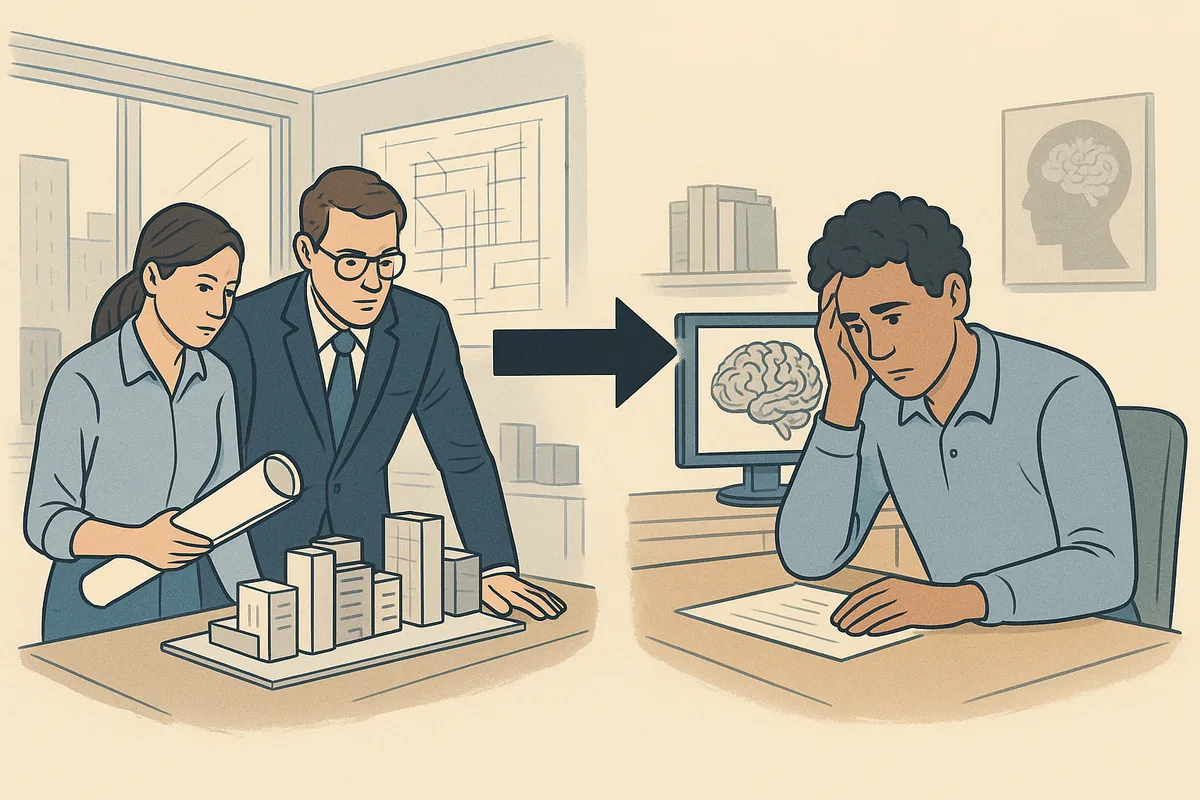A Quiet Revolution in the Loudest Places
 Designing Away Deficit Thinking
Designing Away Deficit Thinking
Clinical autism research has spent decades fine-tuning diagnostic rubrics and chasing biomarkers — trying to find cures for what they see as deficits defined by a pathology paradigm. Meanwhile, a group of architects and acoustical engineers have just published a paper that feels like a generational leap: Ten questions concerning autism and auditory accessibility in buildings (Masiero et al., 2025). While clinicians are still debating whether “Level 1” really means “requiring support,” these designers are openly discussing ableism, participatory research, and universal design as if it were the most obvious starting point in the world. Their questions don’t diagnose autistic people. They diagnose environments — buildings, specifically. (Ableism means treating disabled people as less valuable or less fully human.)
Shifting the Frame From People to Places
The brilliance of the piece is its refusal to treat autistic sensory difference as a personal pathology. Instead, the built environment is what’s under review. Acoustic standards, the authors remind us, were based on the hearing curves of 18–25 year olds with no ear differences. That’s not only unrepresentative of the general public, it’s outright exclusionary for autistic people. Architects are not wringing their hands about deficits. They are mapping how HVAC hum, classroom reverberation and unpredictable low-frequency noise stress people who process sound differently. The path forward is clear: change the standards, not the children.
Participation as Baseline, Not Afterthought
Where clinical scientists often exclude autistic voices with the excuse of “objectivity,” this paper makes the opposite case: research that excludes autistic participation is already ethically compromised. Non-speaking participants? Use AAC. Individuals with atypical communication? Adapt the survey. Results should be shared with autistic communities, not hoarded for citation counts. The authors say this plainly: autistic perspectives are not optional if we want meaningful knowledge. For a field like clinical autism science—where autistic people remain sidelined in favor of third-party observations—this should be a wake-up call.
From Deficit Narratives to Universal Design
Perhaps the sharpest break with clinical culture comes in the discussion of universal design. Instead of aiming to normalize autistic traits, the authors argue for flexible environments that reduce reliance on disclosure or personal coping tools. Ear defenders should be a choice, not a necessity imposed by bad design. Quiet rooms, adaptive acoustics, and sensory-friendly zoning are framed not as “special accommodations” but as basic infrastructure. That is what disability rights has always demanded: environments that do not force us to beg for permission to exist.
Clinicians, This Is What Progress Looks Like
Compare this to the recent spate of clinical studies on “pragmatic language deficits” or “auxiliary benefits of nonverbal interventions.” These papers still treat autistic people as test subjects measured against neurotypical norms. Architects and engineers, by contrast, are treating autistic experience as a reference standard for inclusive practice. They are not asking how to reduce autistic difference. They are asking how to redesign walls, ceilings and soundscapes so that difference is respected. The contrast is clear: the deficit model of clinical science remains pathology-bound, while design is busy making the future livable for everyone.
A Challenge to the Research Establishment
The implicit message of this work is that the clinical sciences no longer hold uncontested monopoly power over what counts as autism knowledge. If acousticians and architects can publish peer-reviewed work that centers autistic voices, names ableism and proposes structural change, then the continued reliance on behavioral normalization in clinical journals looks increasingly indefensible. This is not fringe advocacy — it’s Elsevier’s Building and Environment laying out a research agenda rooted in rights, ethics and practical outcomes.
Closing the Gap
The lesson for AAB’s readers is simple: clinical science must stop congratulating itself on incremental tweaks to deficit models while engineers have already moved on to co-design. Catching up will mean giving up control — ceding epistemic authority to autistic people, revising ethical frameworks to center participation and redefining success as accessibility rather than assimilation. Until then, autistic communities will know where to look for progress, and it won’t be in the clinical literature. It will be in the blueprints of the next building designed to sound less like an assault and more like an invitation.